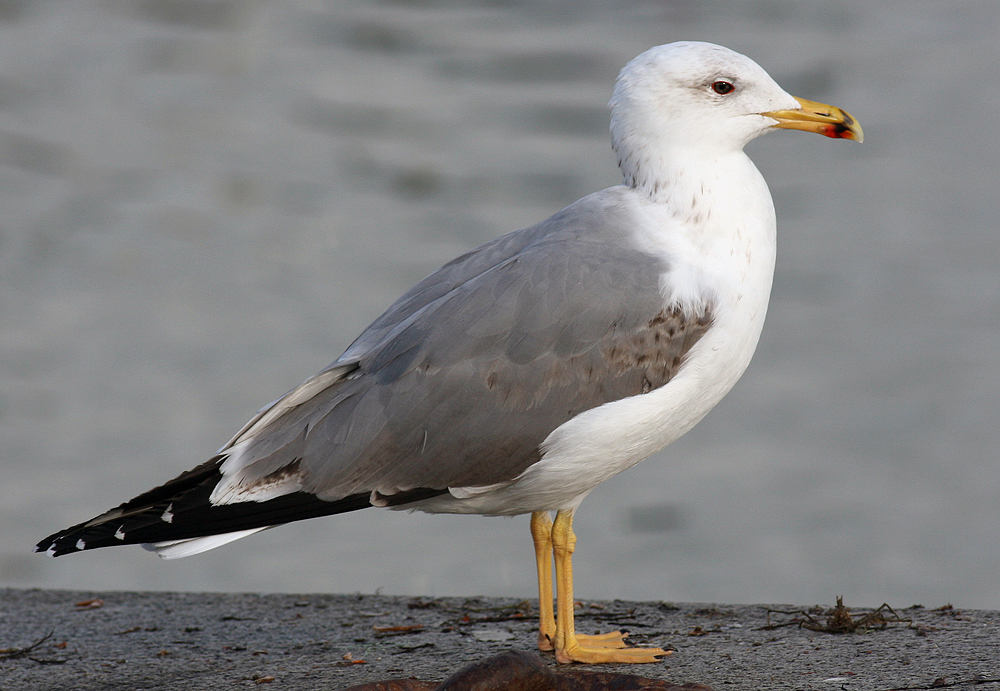 Larus cachinnans
Larus cachinnans
(last update:
Greg Neubauer
Marcin Przymencki
Albert de Jong
Mars Muusse
cachinnans plumages
Larus michahellis lusitanius 3CY, Ares beach, NW Spain, November 27 2009. Picture: Antonio Gutierrez.
There is some variation in the michahellis group, with "lusitanius" birds on the Atlantic coast of the Iberian peninsular. They often look slimmer and more elegant, lacking the fierce angular head shape of many Med michahellis, and this, compared to the more slender bill may sometimes give birds a cachinnans-look. However, note the rich yellow tones in bare parts in this November bird, something that will be more and more obvious in spring birds.
Birds of this age are variable.This one has an obvious mirror in P10 but on others it is much smaller or even lacking. It has a clean white tail but many retain vestigial dark marks. The extensive blackish-brown primary coverts contrast with the otherwise grey upperwing. The black of the primaries forms a solid wedge on the outer wing in michahellis.
